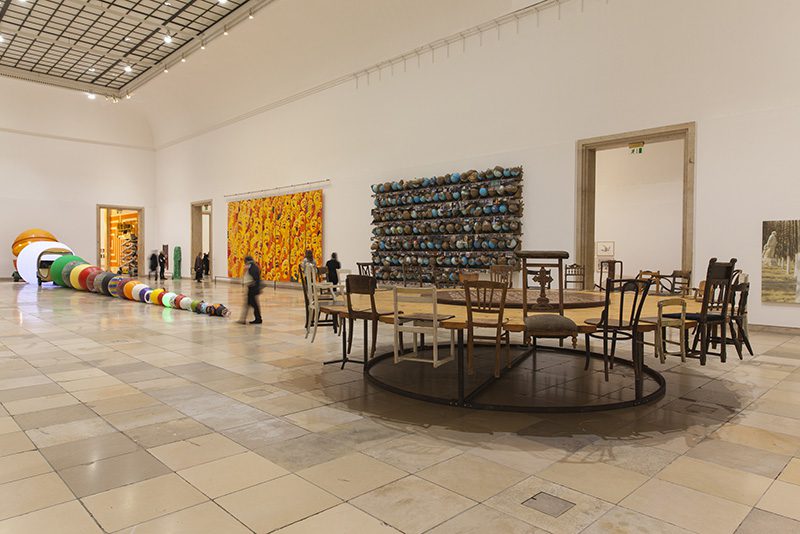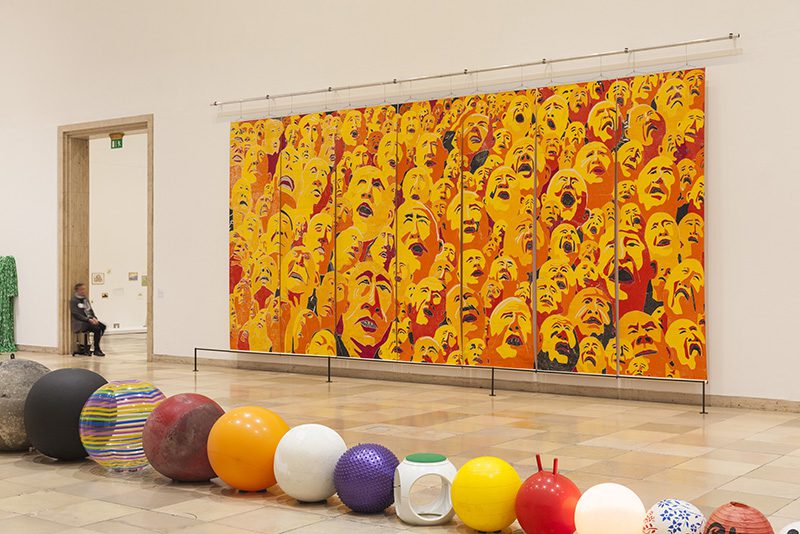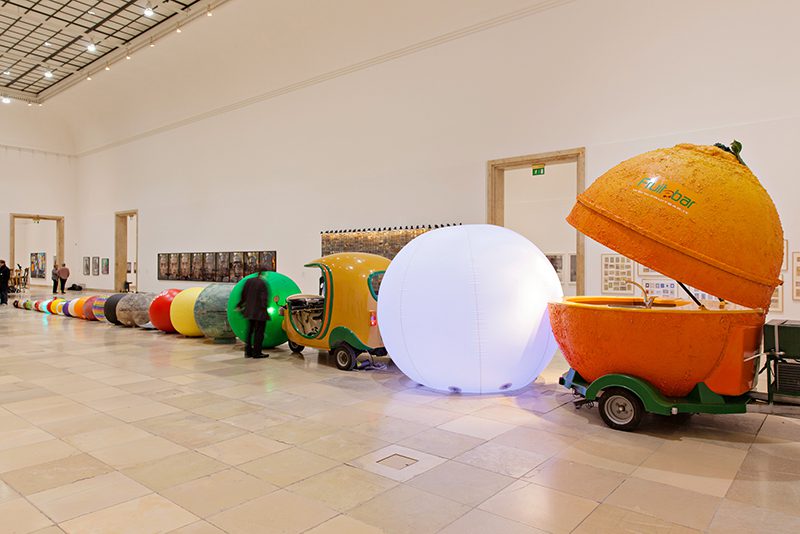ART-TRIBUTE:A History-Contemporary Art from the Centre Pompidou
 The Centre Pompidou’s Collection of Contemporary Art has rarely been presented so comprehensively outside France. The exhibition “A History-Contemporary Art from the Centre Pompidou” raises two questions concerning artistic practice from the 1980s onwards “What factors are relevant for ensuring that art history is written in a specific way?” and “What does an ever-changing understanding of the term “contemporary” mean for public museums and their collections?”
The Centre Pompidou’s Collection of Contemporary Art has rarely been presented so comprehensively outside France. The exhibition “A History-Contemporary Art from the Centre Pompidou” raises two questions concerning artistic practice from the 1980s onwards “What factors are relevant for ensuring that art history is written in a specific way?” and “What does an ever-changing understanding of the term “contemporary” mean for public museums and their collections?”
By Efi Michalarou
Photo: Haus der Kunst Archive
With 160 works by 100 artists from across the world, “A History: Contemporary Art from the Centre Pompidou” at Haus der Kunst provides an incisive overview of artistic positions since the 1980s divided in 7 sectors. The year 1989 marked a break with the past and the start of a new era. The fall of the Berlin Wall toppled divisions in the world of European art, while the events of Tiananmen Square focused attention on a new China. The ongoing globalization allows for an unprecedented mobility. The static understanding of identity, once based on origin and nationality, has since given way to a more transnational and variable narrative. Contemporary artistic proposals, which arise from the new “decolonized subjectivity”, are also based on a new understanding of site-specificity. For example, in the 1960s and 1970s the protagonists of Land Art still understood landscapes primarily as post-industrial ruins. In contemporary artistic practice, however, space is defined above all socially and politically – by traumatic historical events, home country, exile, diaspora and hybrid identities. The thematic sectors of the exhibition are: The Artist as Historian: An interest in the historical document and a more general obsession with the past, have led to the nostalgic excavation and re-enactments of existing works of art. Artists from the Arab-speaking world are increasingly present in the art world, having borne witness to the Gulf War in 1991 and have developed new practices around the examination of history. The Artist as Archivist: Archives are especially useful in helping to identify and address wounds in the collective memory. Sonic Boom: Trying to capture the sensation of listening to music in an image has a long tradition. The Artist as Producer-The “Traffic” Generation: Artists develop new forms of collaboration and collective creation, and make aesthetic use of clips, sampling, and film narrative. The Artist as Documentarist-As Close as Possible to the Real:. The artist takes on the role of a witness who accepts the subjectivity of his observations. Artist and Object: Between 1980 and 1990, artists turned to an exploration of the everyday and the object. The confrontation with consumer society is manifested in photography in detailed and richly colored compositions and in sculpture with the integration of found objects. The Artist and the Body: Video and photography seem to be particularly fitting mediums for artists whose works include a performative element. The theme of the human body (wounded or damaged by oppression), returns as a theme with a vengeance.
Info: Curators: Christine Macel and Julienne Lorz, Haus der Kunst, Prinzregentenstraße 1, Munich, Duration: 25/3-4/9/16, Days & Hours: Mon-Wed & Fri-sun 10:00-20:00, Thu 10:00-22:00, www.hausderkunst.de












